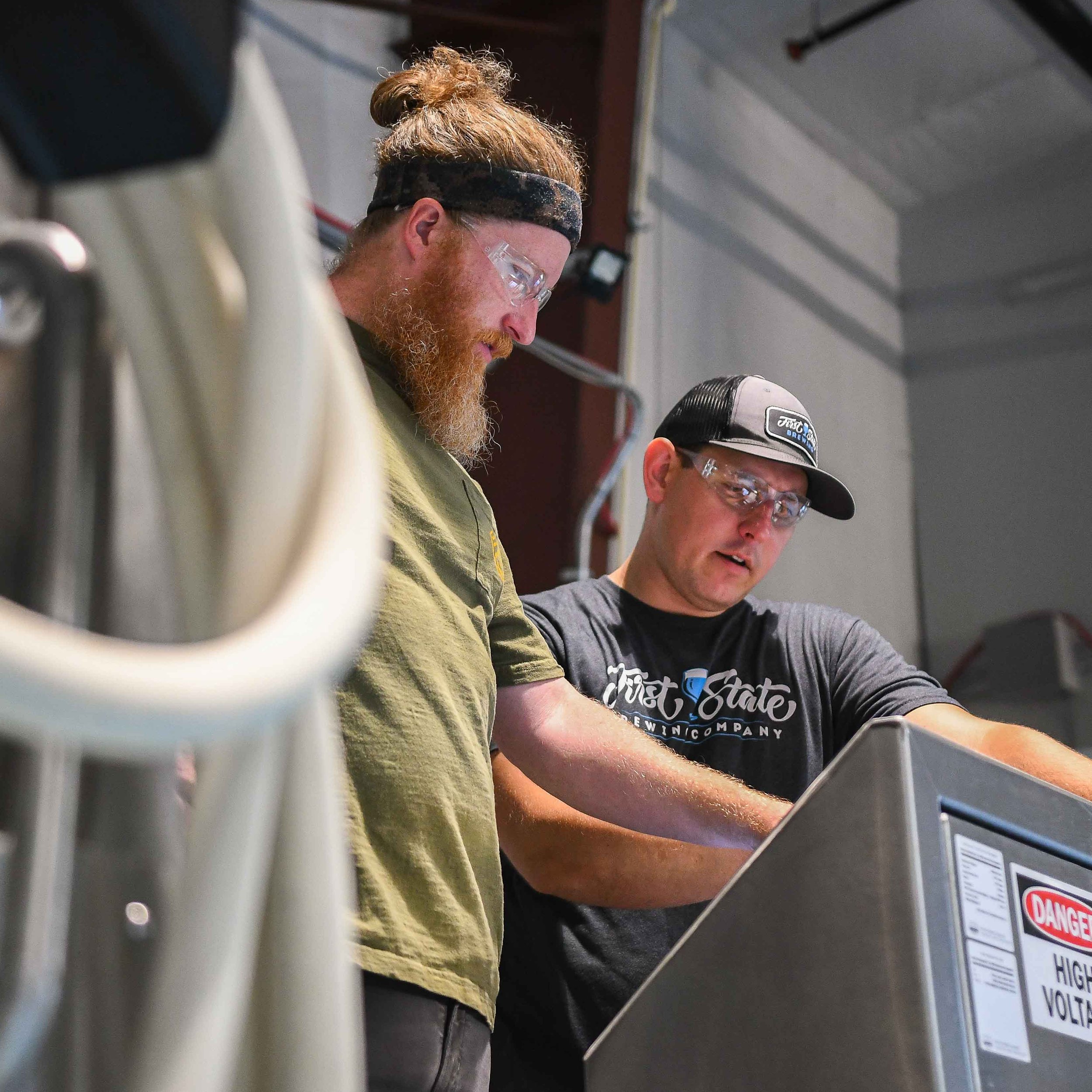Written By Joe Spearot
The importance of a good quality program can’t be understated, and that’s why it was so important for us to open with a dedicated quality program from day 1. With fast plans for growth (and that growth happening even quicker than expected), it was important to ensure we were producing beer to the highest quality we knew how.
Background & Education
Before my introduction to the beverage industry, I received my B.A. in Biology + Chemistry from Arcadia University, and later my Masters in Food Science from Drexel University. Coming out of High School, I planned on being a Forensic Scientist!
It was before my senior year at Arcadia that I was given the opportunity to travel abroad to Mudgee, Australia and work for Lowe Wine. I really thought it was an amazing introduction to the alcohol industry.
During my time at Arcadia, and throughout my studies at Drexel, I worked at Yards Brewing Company as a Quality Assurance Chemist, and later on after I graduated, found myself at Dogfish Head where I worked as a Sensory Specialist and Quality Technician. While working for Dogfish Head I tested for and passed my Advanced Cicerone exam (basically like being a sommelier in wine, but for beer), and proudly became the first and only Advanced Cicerone in the state (as of the writing of this blog).
While these might sound like big confusing titles, you can sum it up easily - I was part of the team that ensured the quality of the products we were making was up to our standards.
All this work ultimately led up to 2020, where I was approached about running the quality program here at FSBC, and the rest is history.
Although this may not look great, this is a good plate! This is our house culture yeast for hazy beer brands.
Quality at First State Brewing Company
We use a multi-pronged approach in our program to ensure we’re touching on each individual aspect of the quality of beer and raw ingredients. Let’s take a look at what each of those prongs looks like…
Microbiology
During my microbiology work in the lab, I’m looking to monitor all important beer-related living things that you can’t normally see with the naked eye. This can include monitoring the health of our yeast, (yeast harvest), ensuring our brewery hygiene is up to spec, and watching out for any potential spoilage organisms (including wild yeast and bacteria) that may make their way into beer.
Molecular
Related to Microbiology, the use of PCR (Polymerase Chain Reaction) technology allows us to detect certain genes of wild yeast/bacteria in beer like Pediococcus, Lactobacillus, and Brettanomyces just to name a few.
Analytical
Using a variety of different tools throughout the brewing process, we monitor everything we can from the time we mill in grain, all the way to packaging and shipping beer (and even aging beer to see how it holds up after an extended period of time). Over the whole process, we record some 30+ individual data points like gravity, pH, alcohol level, dissolved oxygen, and others, to ensure consistency & quality.
Sensory
Sensory is everyone’s favorite part of the quality program because it often consists of drinking beer! I run sensory panels with every beer we release, in order to ensure it’s up to par with the quality we expect. New brands will go through a descriptive panel where participants will record all aromas and flavors they perceive from the beer, as well as other data points, and repeat beers will go through a release panel to ensure they match previous versions of the beer.
Gravity check: Using a hydrometer lets us measure the amount of sugar remaining in a beer to determine it’s ABV.
One of beer’s biggest enemy is Oxygen. This DO meter allows us to measure dissolved oxygen in different ways to ensure there’s no Oyxgen where we don’t want it!
Packaging
Packaging is just as important of a quality check as any other. During packaging we will work to ensure we’re hitting proper fill numbers that are within legal specifications, seam specifications are in check for cans, dissolved oxygen is at appropriate levels, and do other checks to ensure shelf stability.



















